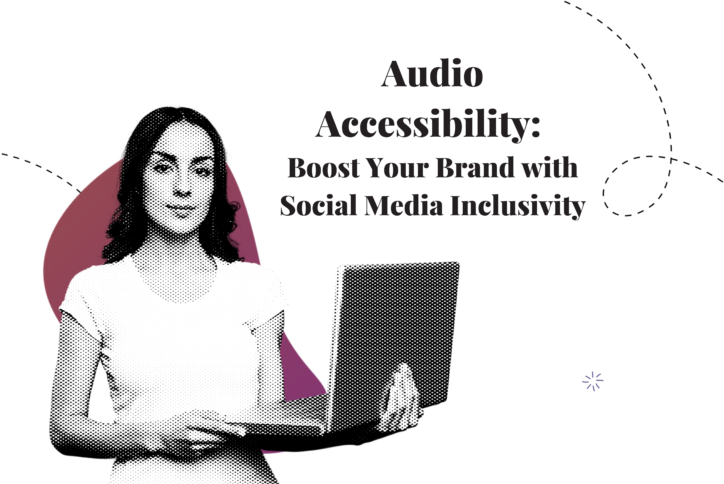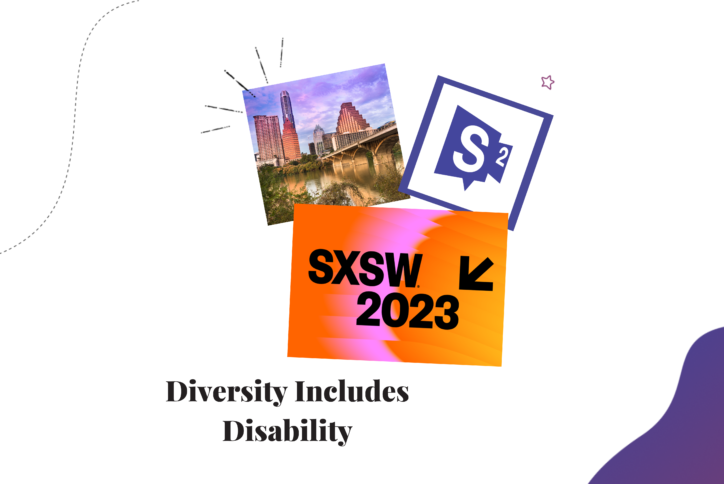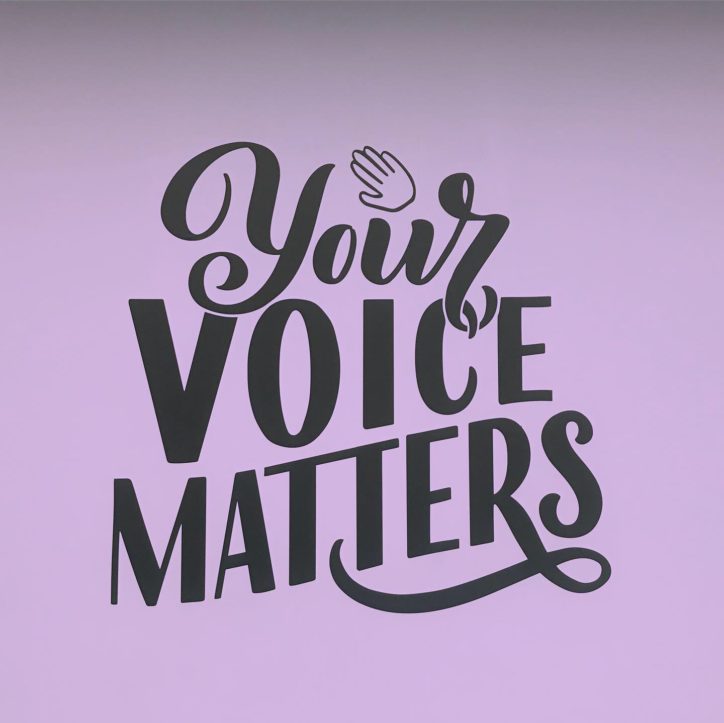Web accessibility is key for any brand. Here are some do’s and don’ts for audio content.
It’s the small things that matter most, especially when it comes to user experience. That’s why accessibility is so important when creating any piece of digital content.
Unfortunately, the experiences people with disabilities or impairments have using web-based content is far too often overlooked or under-considered by developers, designers, and writers.
In fact, some 98% of U.S.-based websites fail to comply with accessibility standards, and there are no industry-wide social media content standards.
Not only does this leave people with disabilities excluded and vulnerable in an increasingly digital world, it is also bad for business. Creating barriers that prevent segments of the population from accessing your brand’s communities (and products) is simply bad for the bottom line.
At Sociality Squared, we are committed to continually working to improve our understanding and application of accessibility best practices as a core value and fundamental tenet of our approach.
That’s why we were proud to recently offer our team a social media and multimedia accessibility training session from TPGi, an accessibility solutions provider that supports all phases of accessibility through best-in-class management software and professional services.
The training session provided an expansive overview of multiple facets of accessibility. We’re excited to share some of what we learned with you over the course of several posts on this blog.
In this post, the first of a series, we’ll start by diving in a bit deeper into some audio-specific accessibility do’s and don’ts.
Audio Accessibility: Boost Your Brand with Social Media Inclusivity

What Is WCAG and Why Is It Important for Audio Accessibility?
Before diving deeper into audio accessibility, it’s important to mention WCAG.
The Web Content Accessibility Guidelines (WCAG) are part of a series of guidelines published by the Web Accessibility Initiative of the World Wide Web Consortium, the main international standards organization of the internet.
The WCAG documents offer explanations about how to make web content more accessible. The goal is to establish a single shared standard for web content accessibility that meets the needs of individuals, organizations, and governments internationally.
The four principles of WCAG are encapsulated in the acronym “P.O.U.R.,” which stands for Perceivable, Operable, Understandable, and Robust.
To determine whether your web content conforms to the WCAG principles, ask yourself these questions:
- Perceivable: Can people with disabilities actually tell your content exists?
- Operable: Is it easy for someone to navigate your website, including on a mobile device, or for someone who only uses a keyboard?
- Understandable: Is the content jargon-free and written in plain language without idioms or innuendo?
- Robust: Does your content work with assistive technology like screen readers?
The WCAG success criteria are the basis of most accessibility legislation, both in the United States and around the world. They are essential to understanding how to make social media content more accessible.
With this knowledge in mind, let’s look at some audio accessibility do’s and don’ts.

Don’t: Use Autoplay Media
Autoplay Media is a feature that causes media to begin playing automatically without the user specifically selecting that playback, such as when the user lands on a web page. This can include background audio or video, a welcome statement, or embedded third-party videos, such as from YouTube.
This sort of thing can be annoying and distracting for anyone, but for people with disabilities, autoplay media can make a web page or piece of content incomprehensible.
If, for example, a Blind user is trying to listen as a screen reader announces page content, autoplay audio happening at the same time can make it impossible for that user to discern the content. To make matters worse, screen readers and audio streams are often controlled by the same volume control, meaning the user is not able to simply turn one source of audio down. Taken together, this renders the web page unusable.
To address this issue, avoid any autoplay attributes on media that you use on your web page or in your social media content. Additionally, provide controls to stop, mute, and adjust the volume.

Do: Manage Background Audio
Of course, some types of web content inevitably involve both foreground and background audio. For example, a newscaster speaking from the field as events unfold around them, a narrator speaking over music, or spoken instructions with ambient noises in the background.
Often, this background audio may be a relevant part of the content, adding context and ambiance. But to make sure this type of content is as accessible as possible, ensure that the foreground audio is clearly discernible, and not muffled or masked.
This can also apply to audio recording files that have quality issues, causing audio hisses, pops, and line noise.

Do: Use Synchronized Captions (Preferably Closed)
Captions, a text representation of synchronized audio in a video, are a highly effective and popular method of providing necessary information to help people who are Deaf or hard-of-hearing understand content.
It’s vital that the text display be timed to match the synchronized audio, obscure as little of the visual content as possible, and include speaker information and information about not-dialogue sounds such as laughter, applause, music, and so on.
Captions can be “closed” or “open.” Closed captions are stored in a separate file from the video, and can be turned on or off by the user. On the other hand, open captions become part of the video, and are permanently visual.
Generally, closed captions are preferable as they offer more control. They allow the user more control — some media players even have the ability to change the font and color of the text! But closed captions also make it easier for you to make updates to the caption text as-needed. Open captions, being “burned-in” on the video, require more extensive editing work to be changed.
A last word: Some media players and AI services can auto-generate captions. These tend to be highly variable in quality and often struggle to clearly reflect situations where there are multiple speakers, the speaker has an accent, or there is background noise (precisely the moments when captions may be most useful).
With significant editing, however, auto caption generators can be helpful at expediting the process of caption creation. Just remember: Accuracy matters!

Don’t: Skip Transcripts and Audio Descriptions
Recorded content that is presented either in video-only format (like a silent movie) or audio-only format (like a podcast) must be made available in an alternative format.
It’s not hard to imagine the frustrating, exclusive, or even dangerous impact of video-only content for people who are Blind, audio-only content for people who are Deaf. To address this, you can provide a text alternative, such as a transcript, that is readable by screen readers or even an audio track describing video-only content.
Transcripts should include spoken dialogue, identifying speakers when there is more than one, as well as relevant visible action taking place in the video, song titles or lyrics that convey a particular meaning, background music description if meaningful, and other meaningful sound cues.
When it comes to audio descriptions, include spoken descriptions of any content that can be seen but not heard, such as gestures, facial expressions, and text in the video. Do not describe audible speech or sound effects.

S2’s Commitment to Web Accessibility
Nobody is perfect, and there is always room to improve inclusivity and accessibility in our businesses and personal lives. At S2, we believe the most important step is the first one — just getting started. Making continuous progress toward equity is more important than getting it perfectly right on the first try.
We work to build diversity and accessibility into the fabric of S2, but we also acknowledge the gaps in our understanding and the fact that we will sometimes make mistakes.
Nonetheless, Sociality Squared is committed to continuously getting outside perspectives and expertise, auditing our own work, fostering diversity within our team, and constantly working to improve ourselves and our society.
Additionally, here are some advocates we recommend following for perspectives from the disability community:
- Andrew Pulrang
- Haben Girma
- ChanceyFleet
- Mark Greenfield
- Alice Wong
- Kendall Ciesemier
- Carly Findlay
- Imani Barbarin
- And many more!
For a comprehensive social media and content marketing audit that includes web accessibility, reach out today.
Subscribe to our monthly S2xAccess newsletter:





